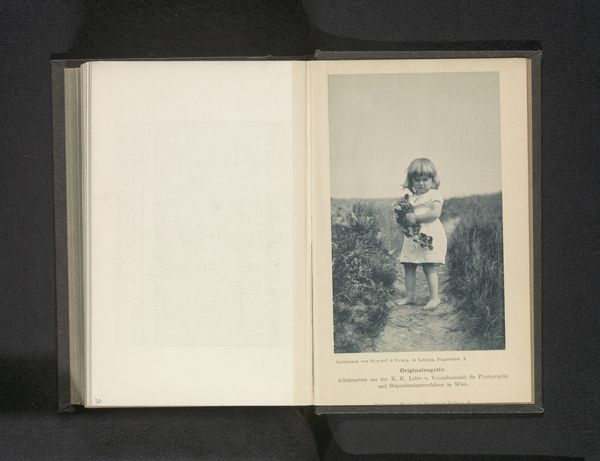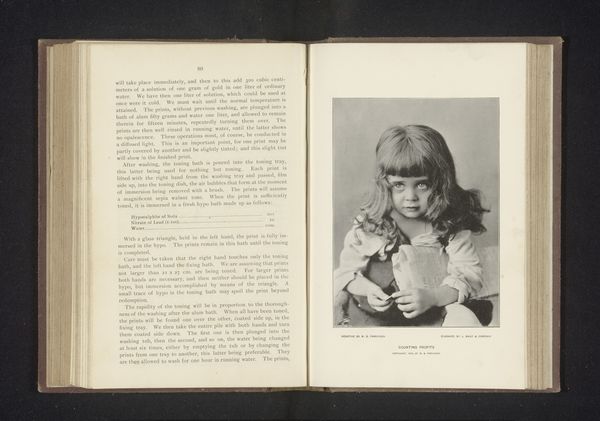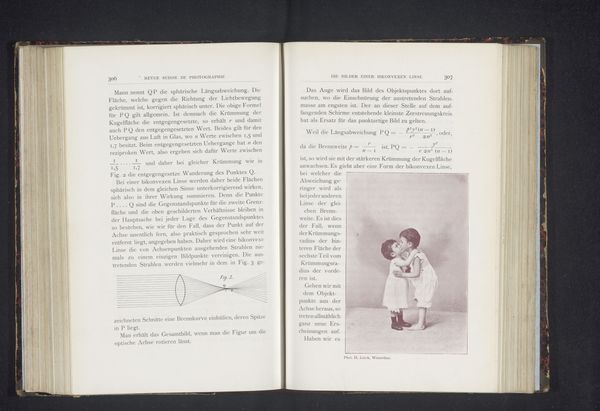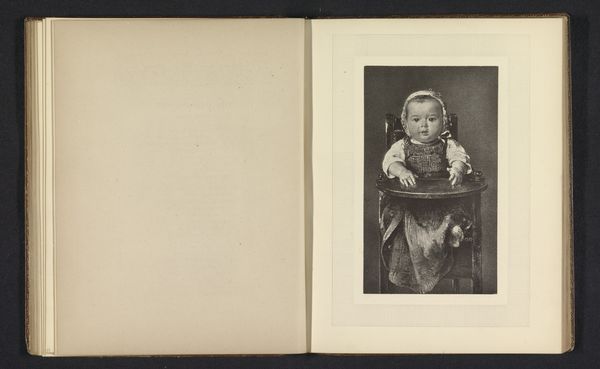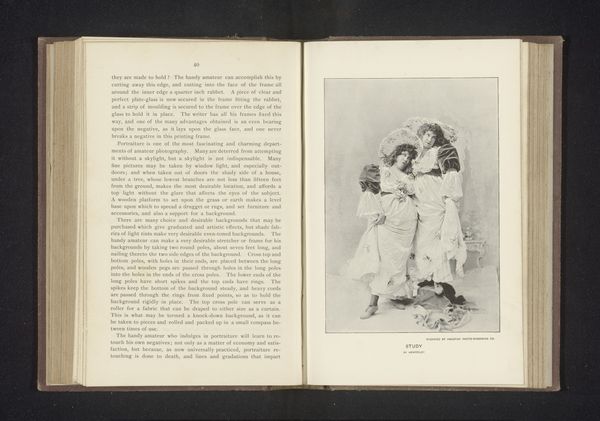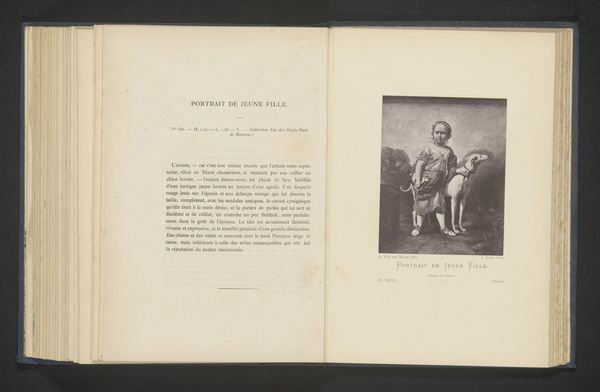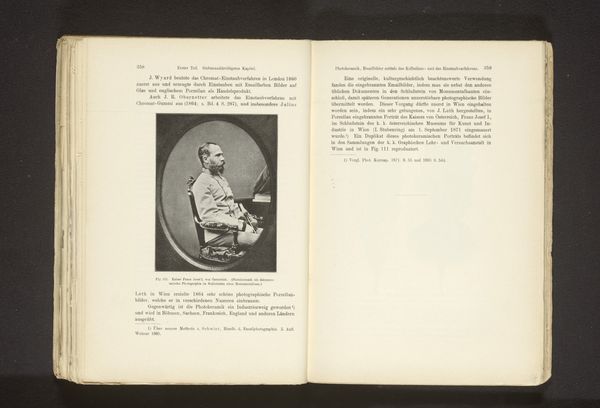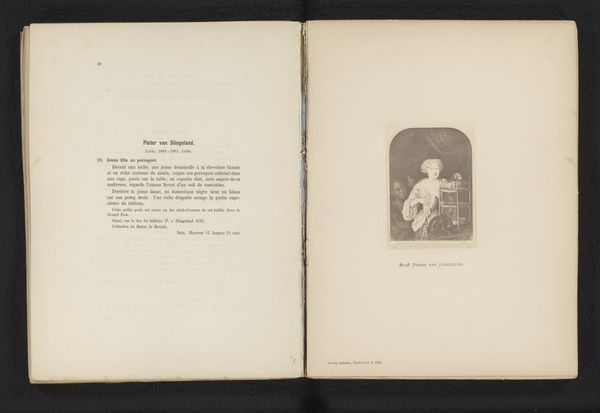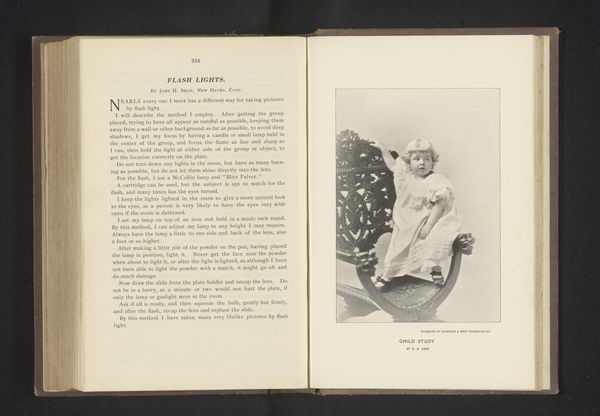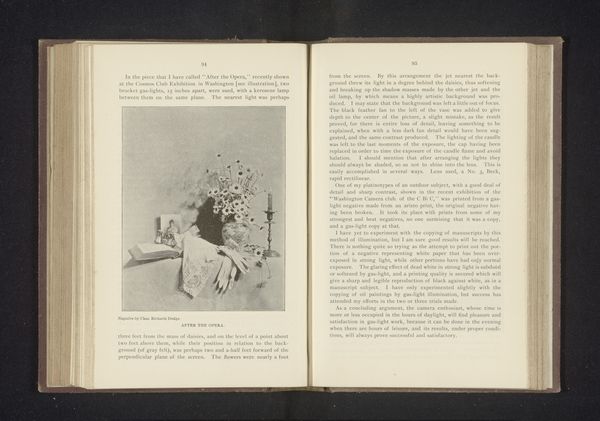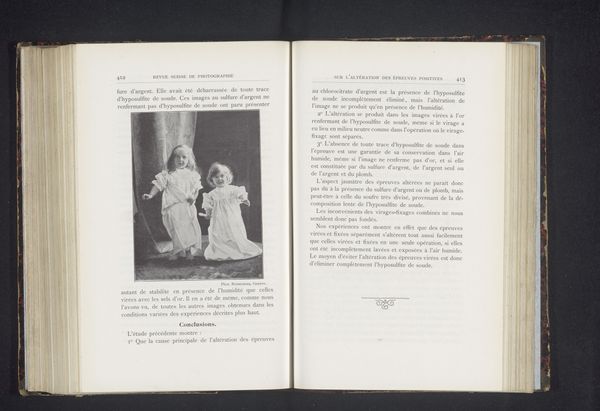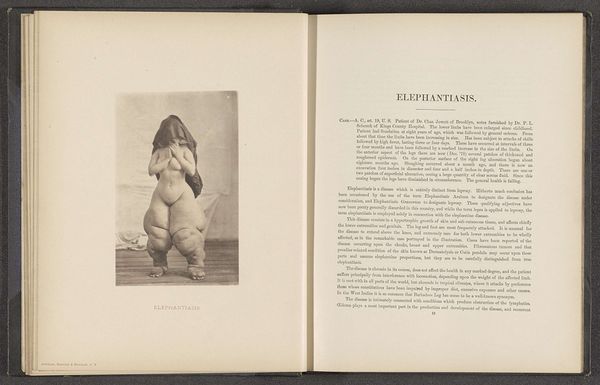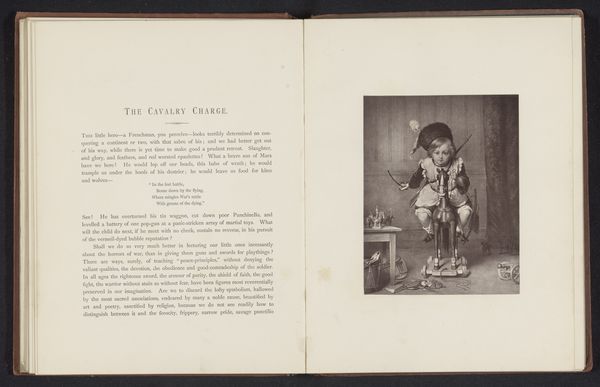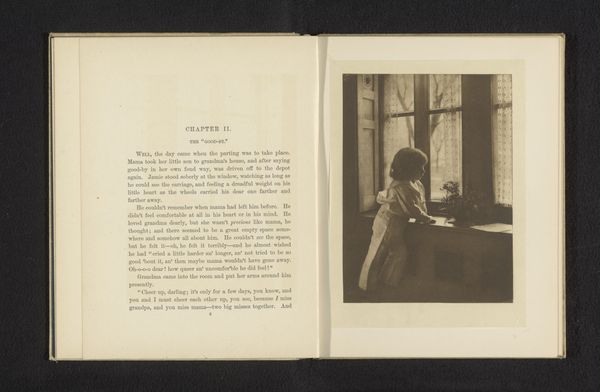
print, paper, photography, ink, gelatin-silver-print
#
portrait
#
still-life-photography
# print
#
paper
#
text
#
photography
#
ink
#
child
#
gelatin-silver-print
#
paper medium
#
modernism
#
historical font
Dimensions: height 181 mm, width 113 mm
Copyright: Rijks Museum: Open Domain
Curator: Here, displayed in a reproduction within the leaves of an old book, we have “The Little Philosopher.” This gelatin-silver print, crafted by J.A. Brush, likely dates from before 1895. Editor: There's a starkness to it, wouldn’t you say? A solemn child, eyes upturned toward a single dark balloon. It feels so weighted somehow, a miniature adult lost in thought. Curator: I find the balloon interesting—like a thought bubble made tangible. The book it is printed on offers instructions for early photographic processing. Maybe it serves as a metaphor for ephemeral thoughts? Editor: Maybe it is a world, right there floating above his head. Children have a capacity for existential questioning, so maybe we underestimate a little person's imagination and sense of the wider universe? The text itself reads, “Plates for Hot Weather,” which seems completely unrelated, lending to the photograph's ambiguous charm. Curator: The juxtaposition is almost jarring. Instructions for photo processing next to this poignant image...it's a beautiful and strangely powerful contrast. Is this, maybe, a child philosopher seeking wisdom from the ether? Or maybe seeing more than most adults around? Editor: The high-contrast monochrome really underscores the gravity, but also the potential for enlightenment and transformation—that is captured here on the verge. Also, children appear repeatedly in photography, with great emotional resonance across history. Is that to capture innocence or a potential future? Curator: Both? The way childhood and philosophy are linked is, as always, an invitation to see and feel in ways long past our reach. I agree it works perfectly on both levels, and with our modern gaze in 2024, it feels refreshing, almost new, doesn’t it? Editor: Absolutely. An artifact hinting at deep thoughts—the kind only a small child is equipped to ponder, I am convinced!
Comments
No comments
Be the first to comment and join the conversation on the ultimate creative platform.
